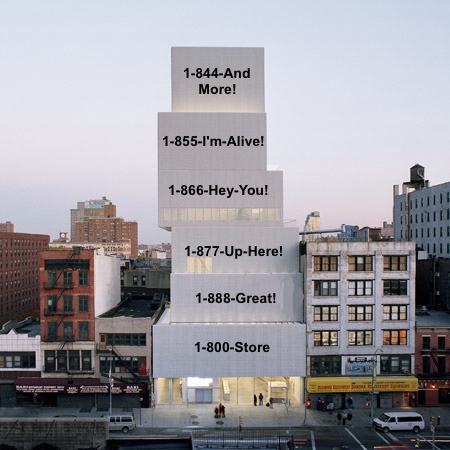With the rush of capture 855 numbers last month, what better time than now to put this new toll free code in perspective.
To be sure, all toll free numbers are functionally equivalent. That means whether you have an 800, 888, 877, 866, or 855 number, they all work the same.
Yet, there are remarkable differences in perception and, when it comes to marketing, perception matters. If you’ve been around the toll free world very long, you’ve undoubtedly heard someone say, “My 800 number is 888-782-….” Or, “We have an 800 port request for 877-456-…” The point here is that “800” is the original toll-free code and – like a “.com” for Internet domains – “800” has become generic for toll-free, and the public uses toll-free and 800 interchangeably.
Next up was the 888 exchange which not only looks special – given the triple 888 – but was afforded a great deal of a public attention when 800 numbers were replicated in the 888 code and even more when there was talk of auctioning off the replicated 888 numbers. Despite their added publicity and being in-use since 1996, if 800 numbers are “Main Street,” 888’s are still a second level address. Damn nice, but second best.
While 800 and 888 are clearly unique and well known, the rest, 877, 866, and the new 855 numbers, are all confusingly similar to local exchanges and are not universally known to be toll-free numbers. Each of these subsequent toll free codes have at least one active area code that is just a digit off, 877 has 878 (Pittsburg overlay), 866 has 868 (Republic of Trinidad and Tobago) , and 855 has 858 (North County, San Diego), for example, but there are others.
In addition, there was virtually no publicity surrounding the opening of 877, 866, and – as many of you have seen first hand -- the 855 code, so it should come as no surprise that it’s been an uphill battle to win over the hearts of minds of the public-- especially at a time when being “toll-free” has lost any real significance.
In effect, everyone knows that 800 numbers are toll free, and most people know that 888 numbers are as well. Yet, the others are just as likely to be confused with the generic 800 version when the requisite “toll free” label is applied, as they are to be confused with local, geographical exchanges.
 To put this graphically, imagine a multi-level building with the street-level, retail 1-800 store open to main street, while the other codes occupy upper levels at the same address. Anyone dialing a “toll free” address is likely to gloss over the actual code and wander into the 800 store, i.e. dial the 800 version. This confusion exists despite adding the label “toll free” which, by necessity, keys the caller that the published number is not just some out-of-state, local exchange.
To put this graphically, imagine a multi-level building with the street-level, retail 1-800 store open to main street, while the other codes occupy upper levels at the same address. Anyone dialing a “toll free” address is likely to gloss over the actual code and wander into the 800 store, i.e. dial the 800 version. This confusion exists despite adding the label “toll free” which, by necessity, keys the caller that the published number is not just some out-of-state, local exchange.
When it comes to marketing, these shortcomings make it preferable to use 800 numbers whenever possible to target new customers, i.e. prospecting. What you never want to do is advertise an upper-level address, only to drive prospects to a direct competitor in the retail, 800 space below.
Yet, upper level addressing may be perfectly fine for customer care and other functions where customers are compelled to find you. Here, even if they wander into the main street location, they’ll keep searching.
The bottom line; Neighbors matter.